France, June 2016 - Fontenay Abbey
|
| After the Alesia battlefield, our next step was more peaceful -- the Abbey of Fontenay, a short distance away. This isolated Cistercian abbey provides an outstanding picture of medieval abbey life in France. |
| |
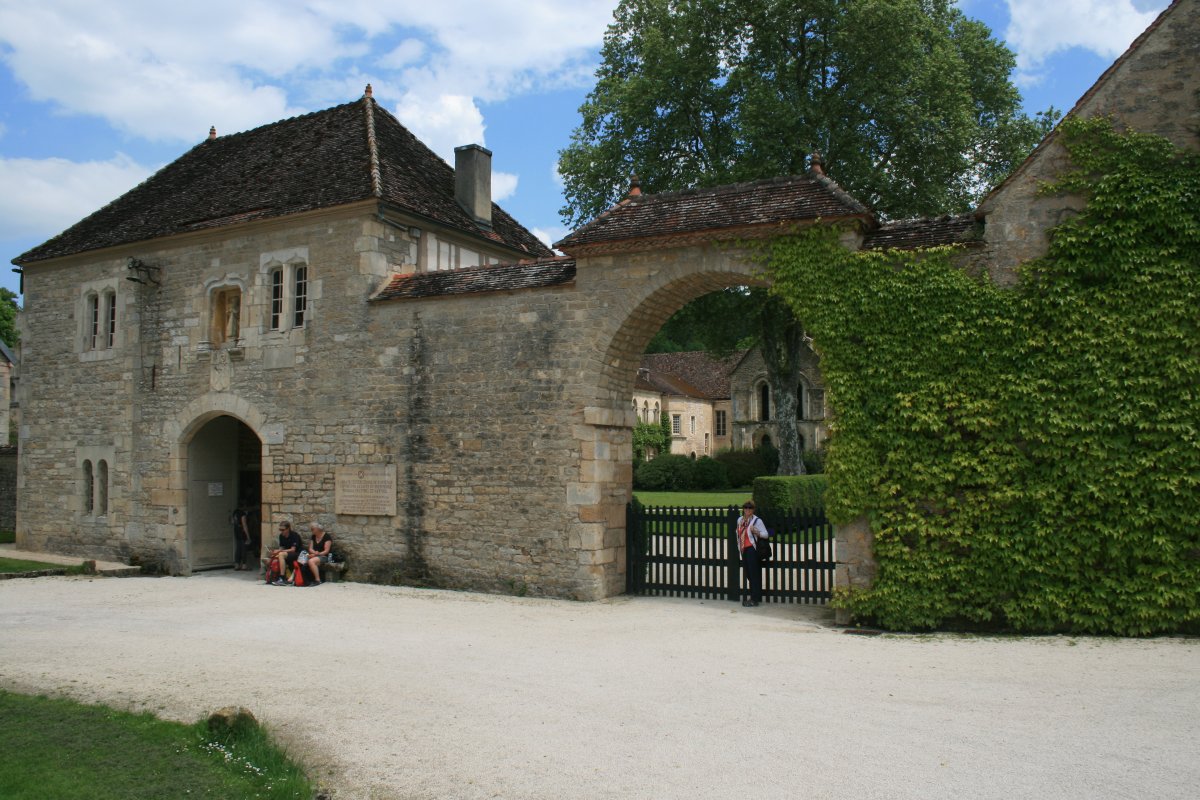 |
|
|
The Abbey of Fontenay was founded by Saint Bernard in 1118. It is one of the oldest Cistercian abbeys which branched out from the original monastery of the order, Citeaux, itself founded in 1098. By 1200, there were more than 500 such monasteries and abbeys in Europe.
|
| |
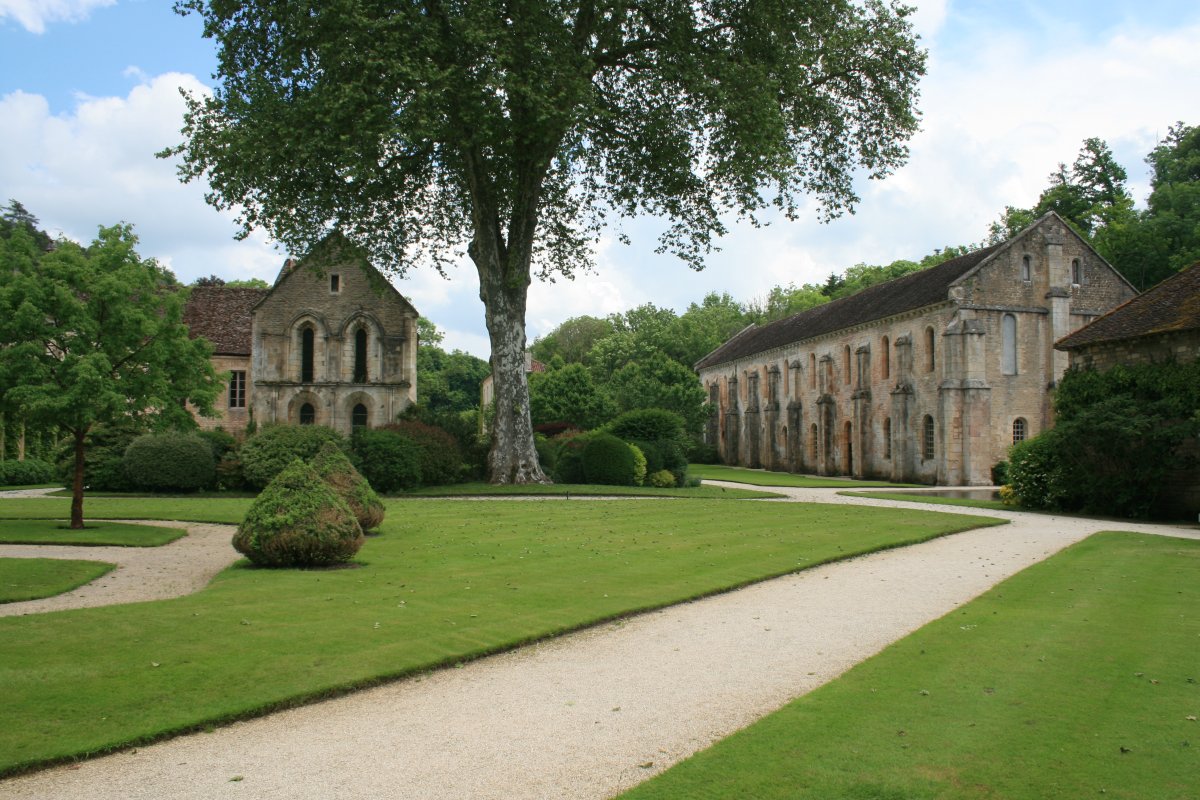 |
|
|
The abbey grounds were very peaceful and quiet.
The Cistercians wished to reform monastic life, and to fully apply the rule of St Benedict [5th century], which prescribes a life of poverty, lived in self-sufficiency and solitude. Before building Fontenay, the original monks carried out considerable works to sanitise and clear the land, which was flooded by the surrounding waters. The abbey was very wealthy from the 12th century through to the 15th century, boasting a community of more than two hundred monks. The monks led a life of utter self-sufficiency, and were the proprietors of a large estate, which they cultivated, farming livestock and founding a metal-working industry. The monastery went into decline in the 16th century. At the time of the French Revolution, the monks of Fontenay were less than a dozen. The abbey was sold off and became a paper-mill. In 1906 it was bought by banker Eduoard Aynard who restored it. The Aynard family still owns it and it is a Unesco world heritage site.
|
| |
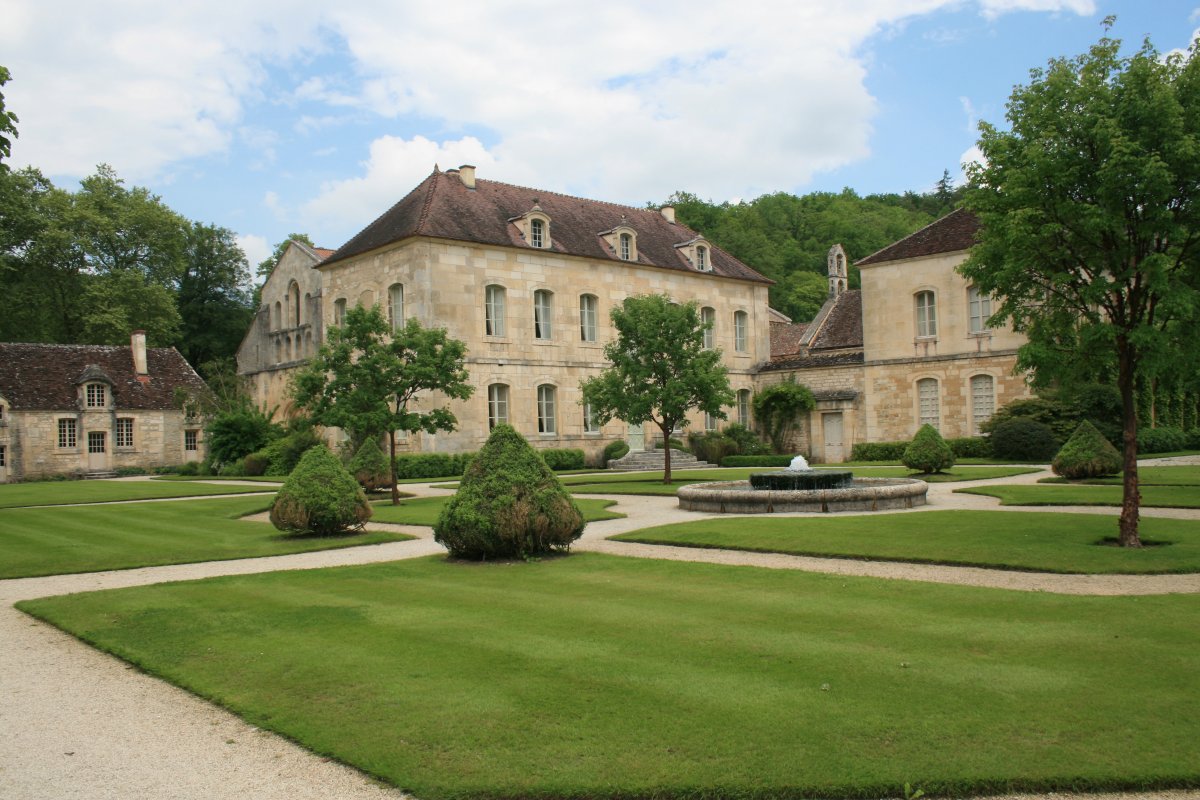 |
|
The cone shaped tower to the left is a Dovecote. A Dovecote is a structure intended to house pigeons or doves which were an important food source historically in Western Europe. (I had to look that one up!) |
| |
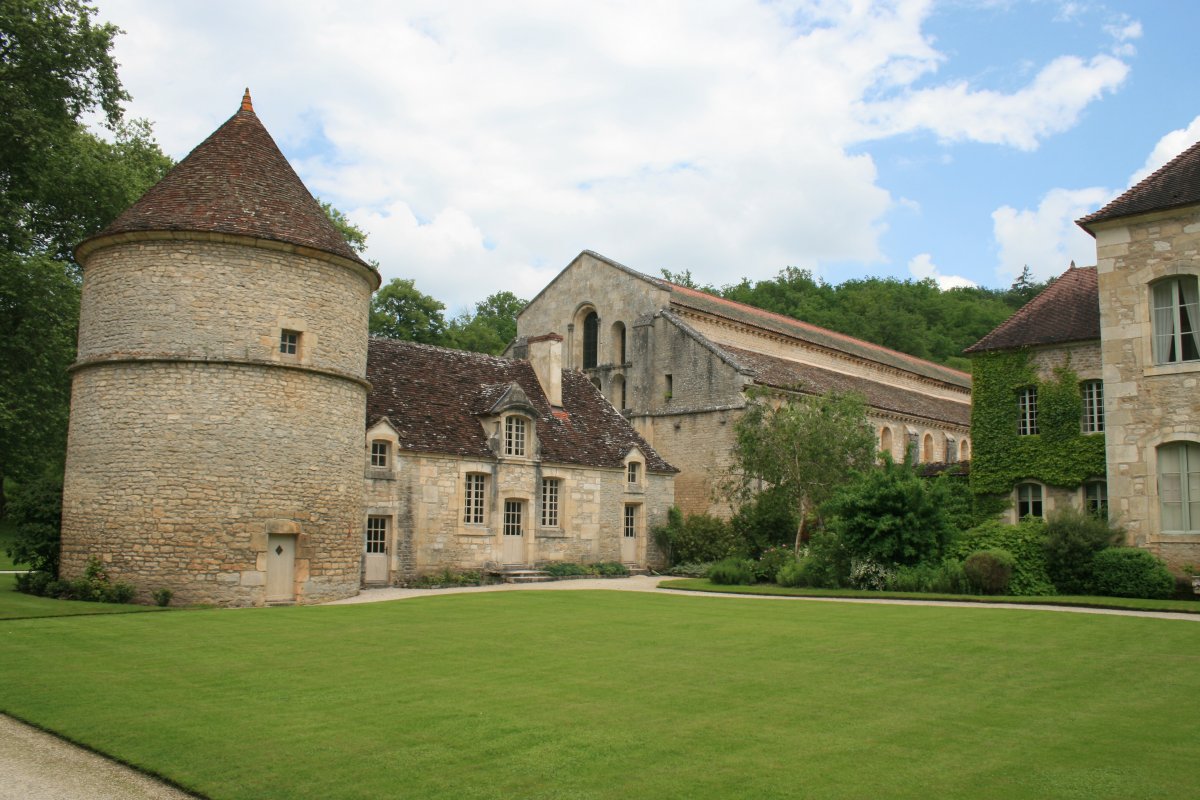 |
|
| Sculptures of dogs represent that kennels used to stand on this site. The dogs were used for hunting in the forest. |
| |
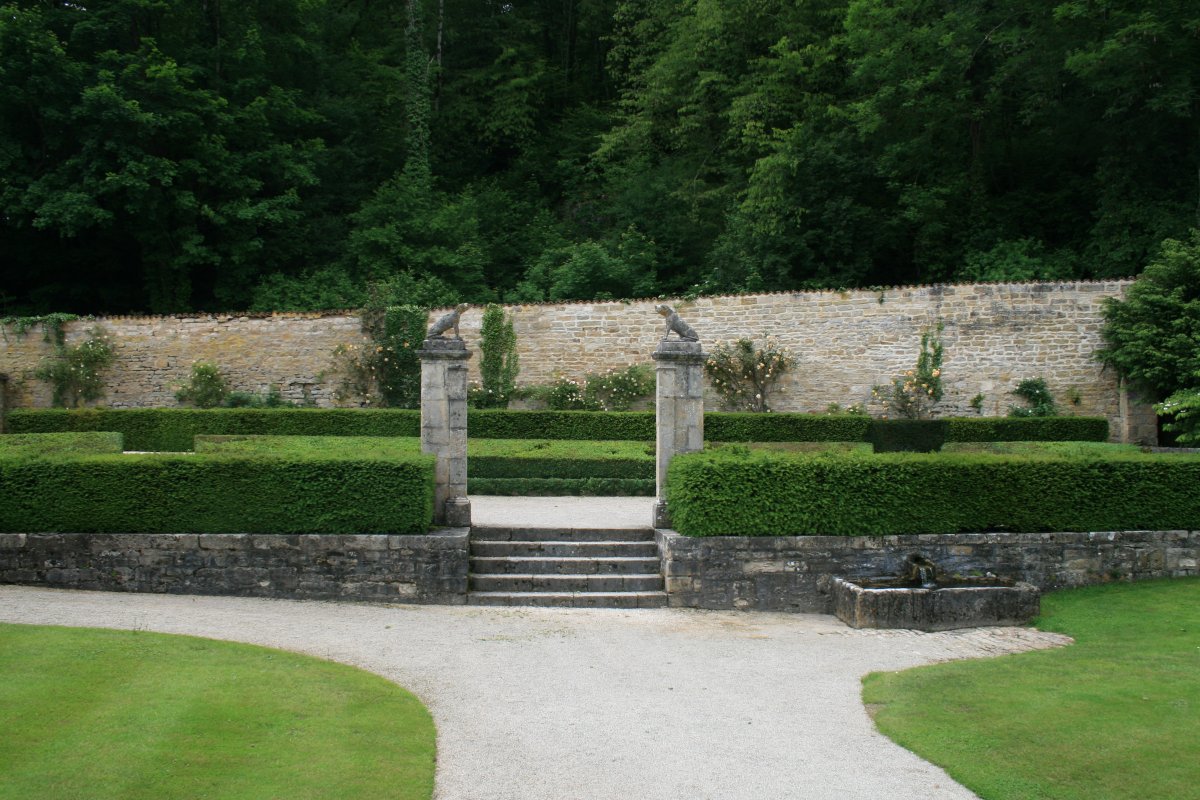 |
|
| The Abbey Church. |
| |
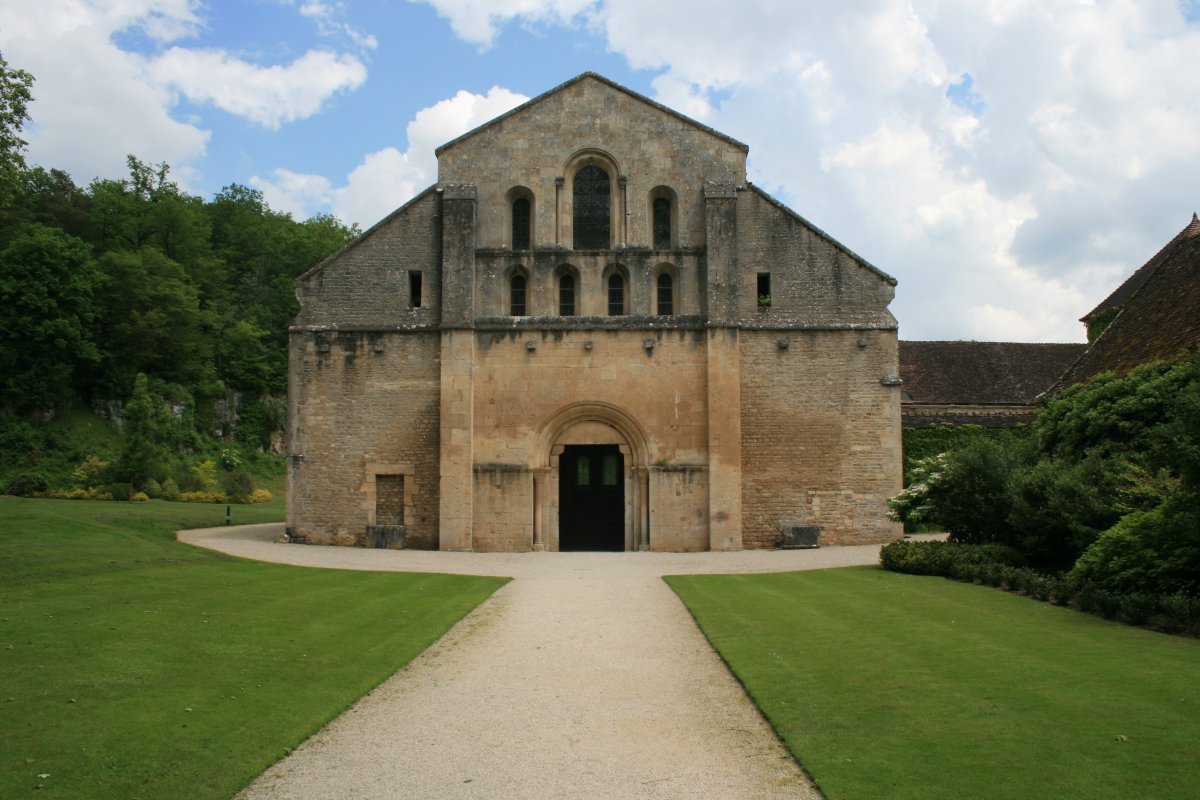 |
|
| Inside the Abbey church which is shaped like a roman cross. |
| |
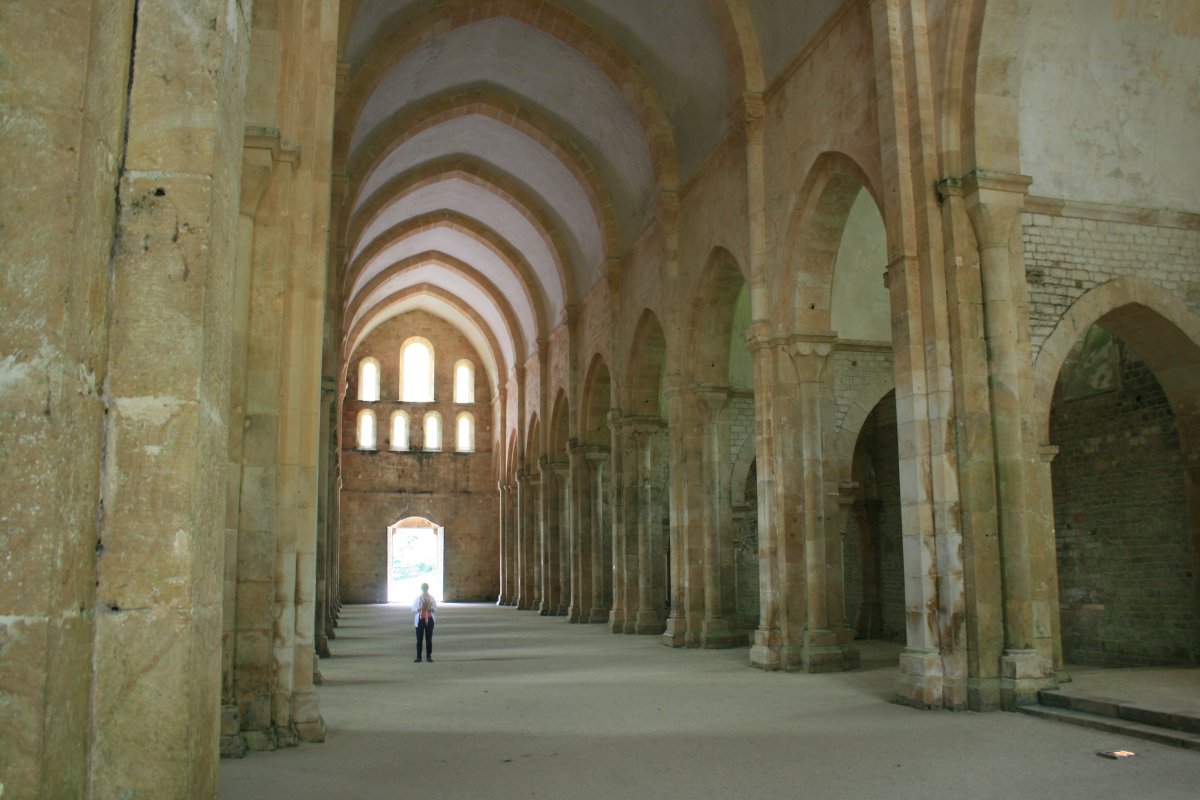 |
|
|
The Chapter House, vaulted with crossed ribbing. Every day, the monks assembled together in this room. They would have read and commented a chapter of the Rule of Saint Benedict.
|
| |
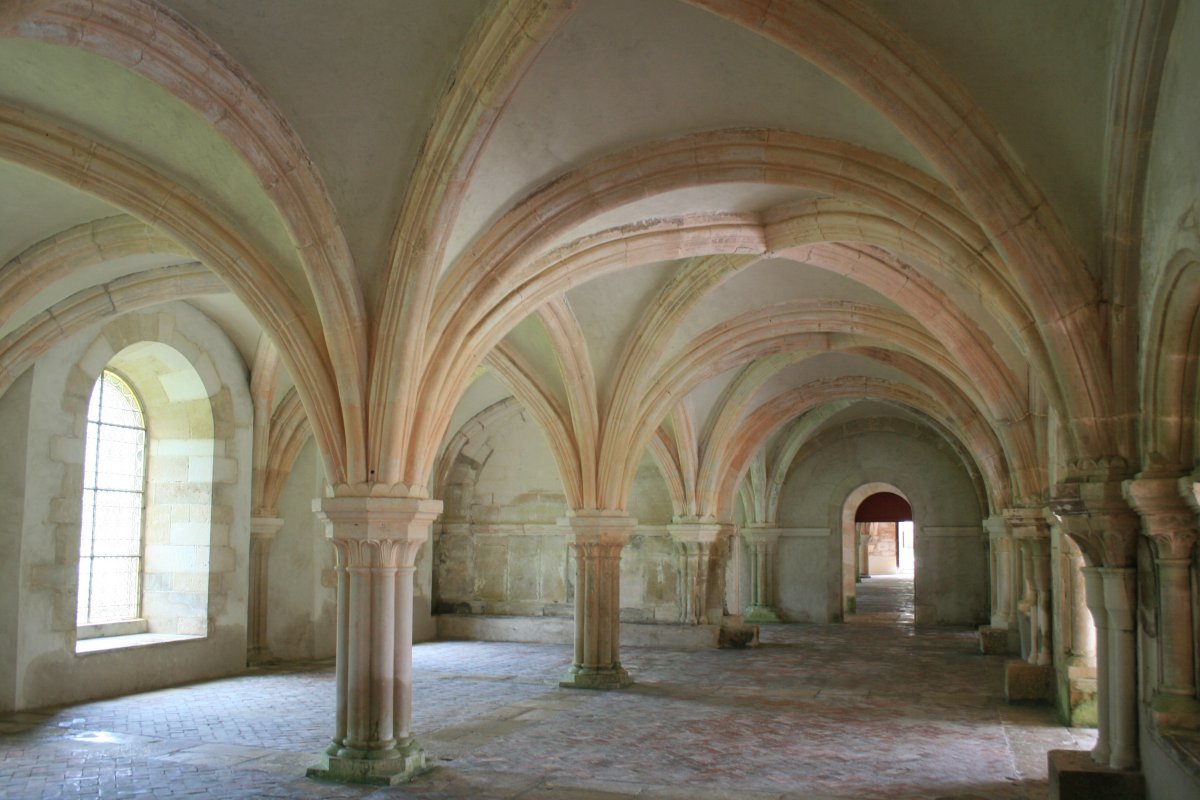 |
|
| Lynnette exploring the abbey's great garden. |
| |
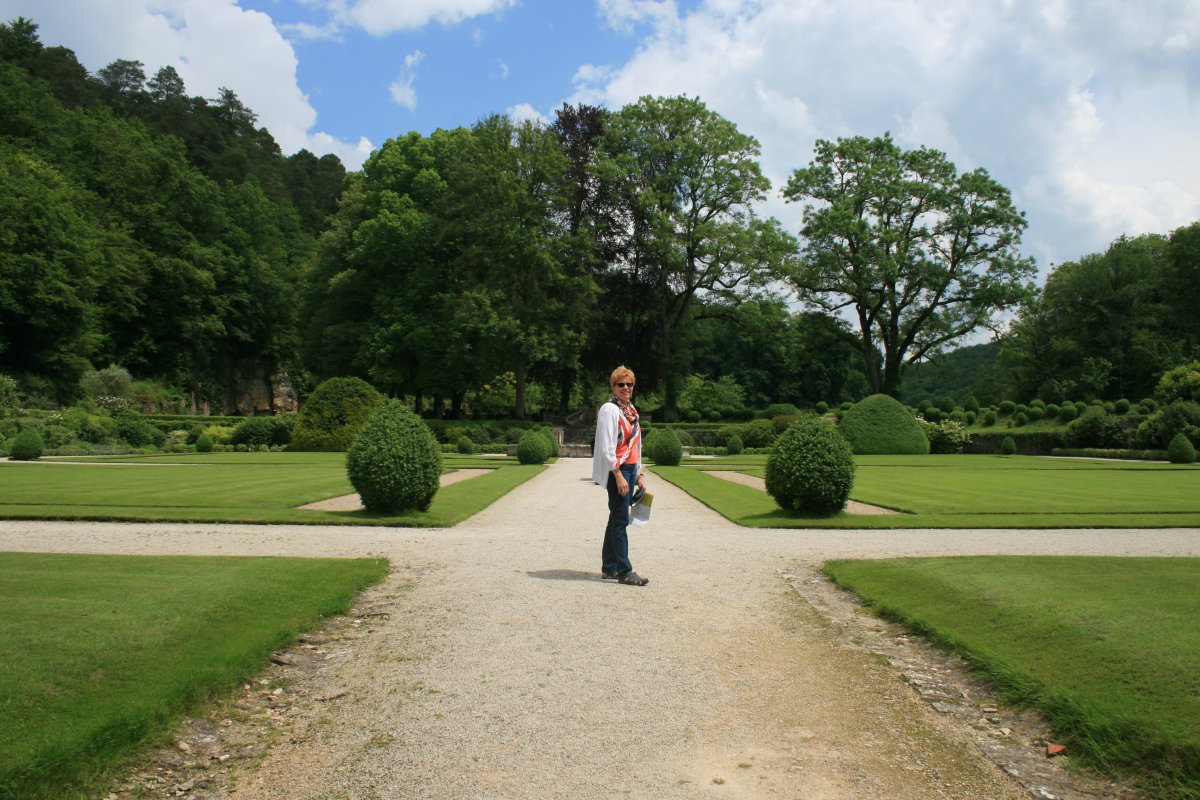 |
|
|
The monks extracted iron ore from a hill that overlooks the monastery. The diversion of the river of Fontenay, which runs along the southern wall of the forge, turned the wheels which powered the large hydraulic hammer -- the apparatus pictured here -- which in turn would pound the hot iron. The ironmonger monks of Fontenay developed industrial plants, which produced tools, which were then sold in the neighboring area.
|
| |
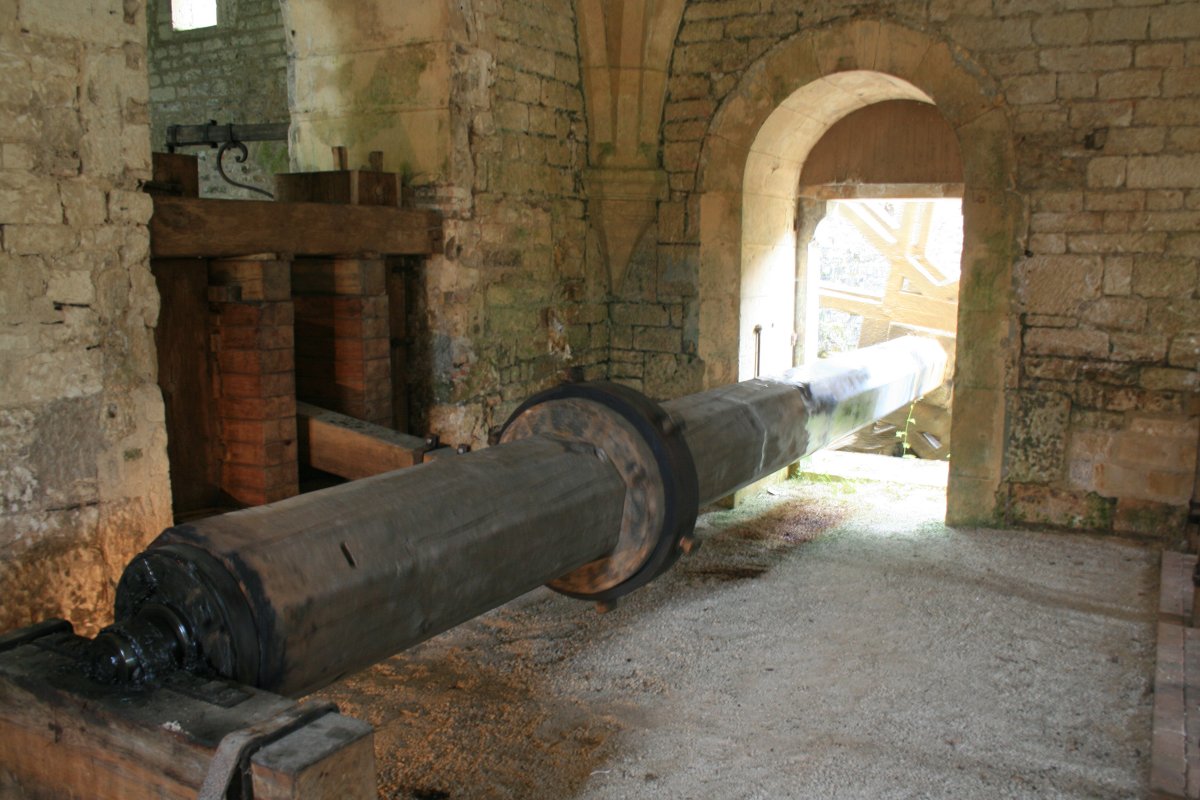 |
|
| I wonder how long this tree has stood sentinel over the Abbey? |
| |
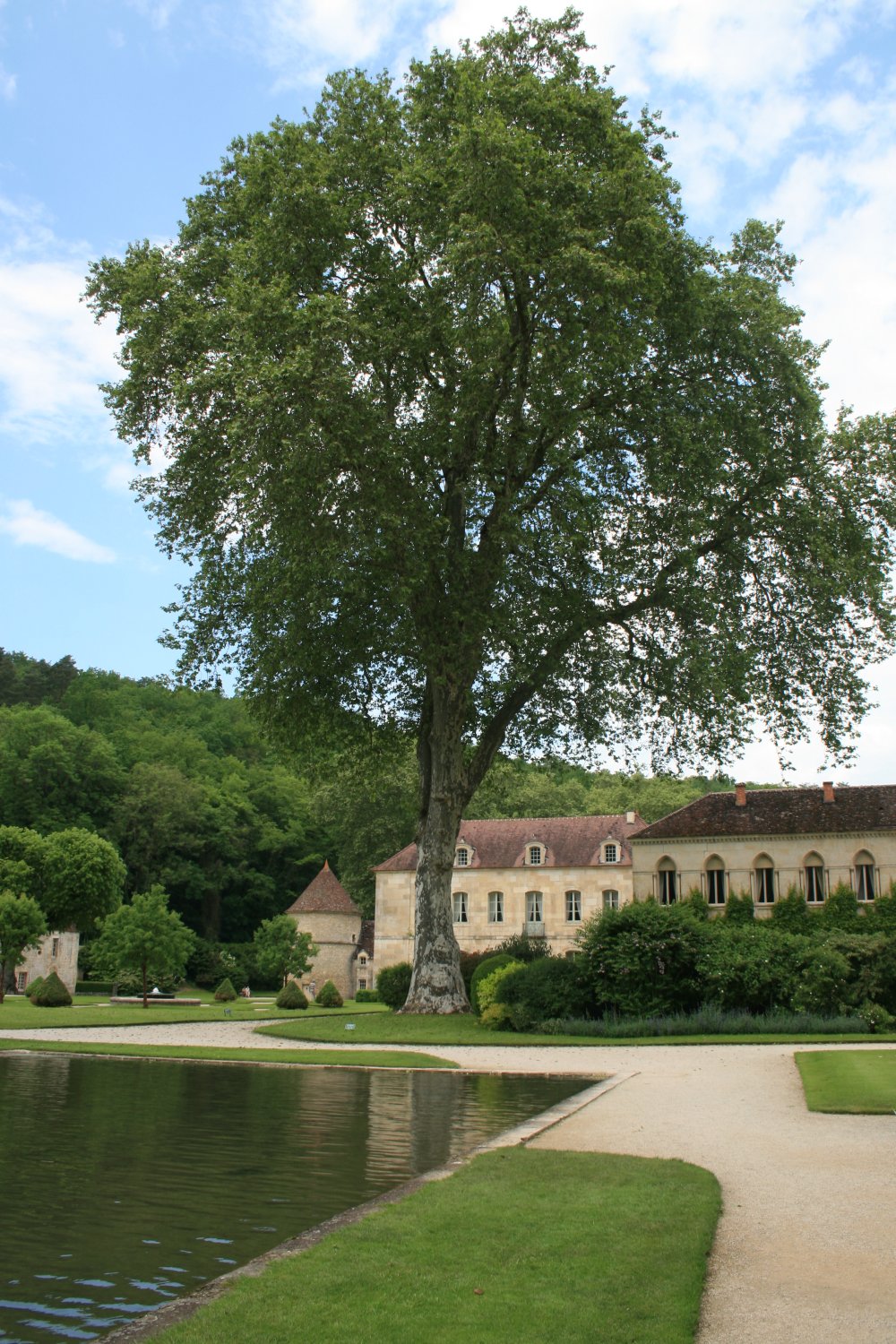 |
|
| A little waterfall by the foundrey. |
| |
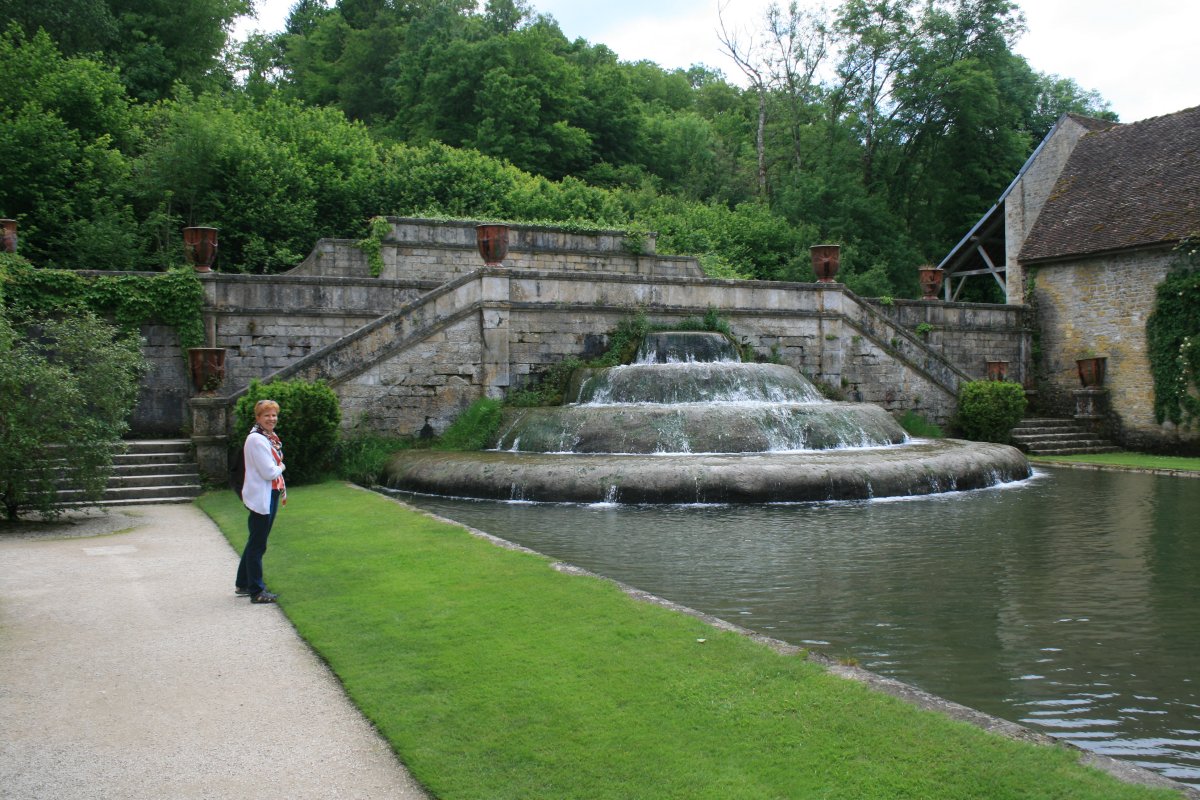 |
|
| |
| |
|
|
|
|
|
|











